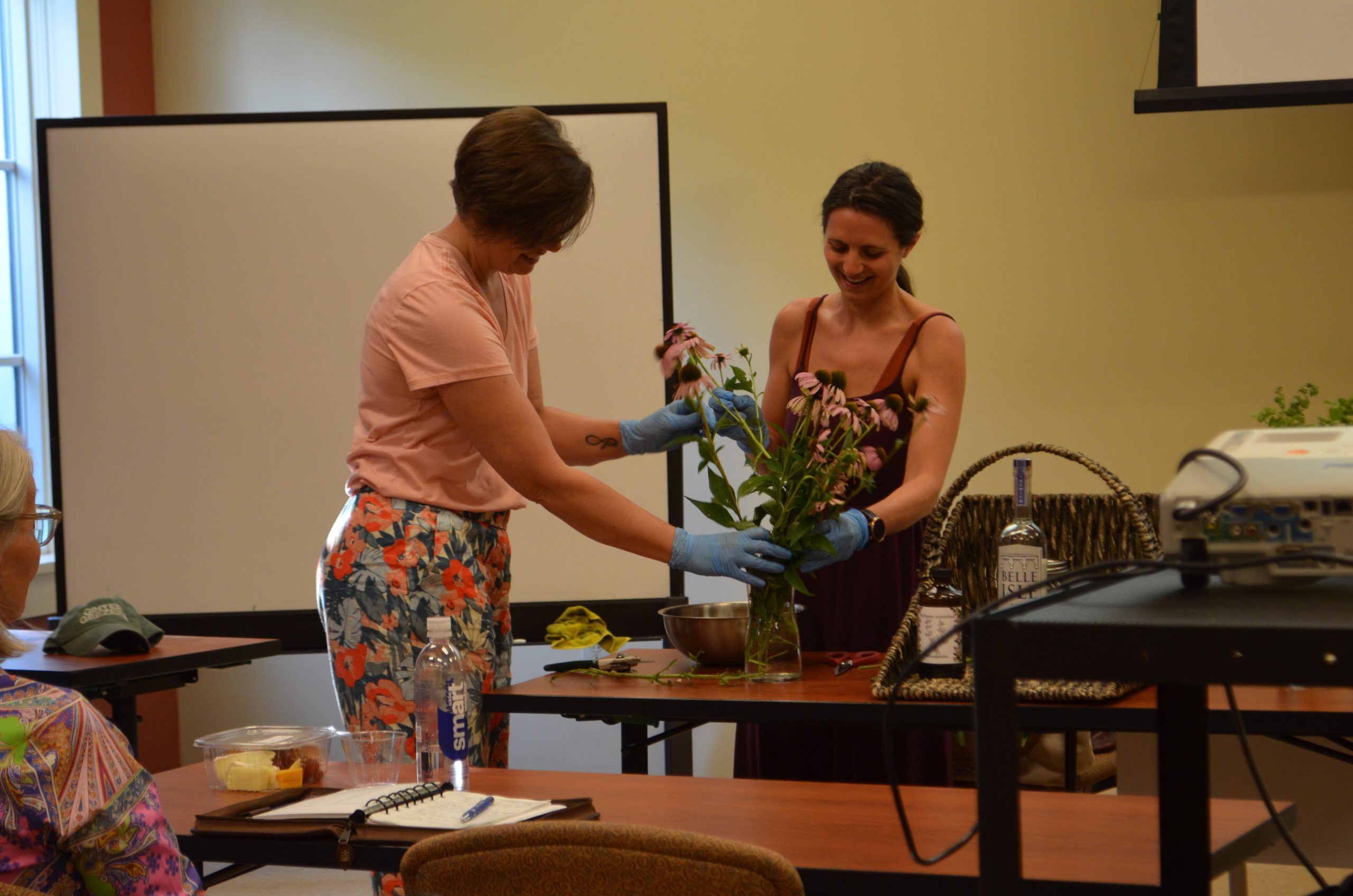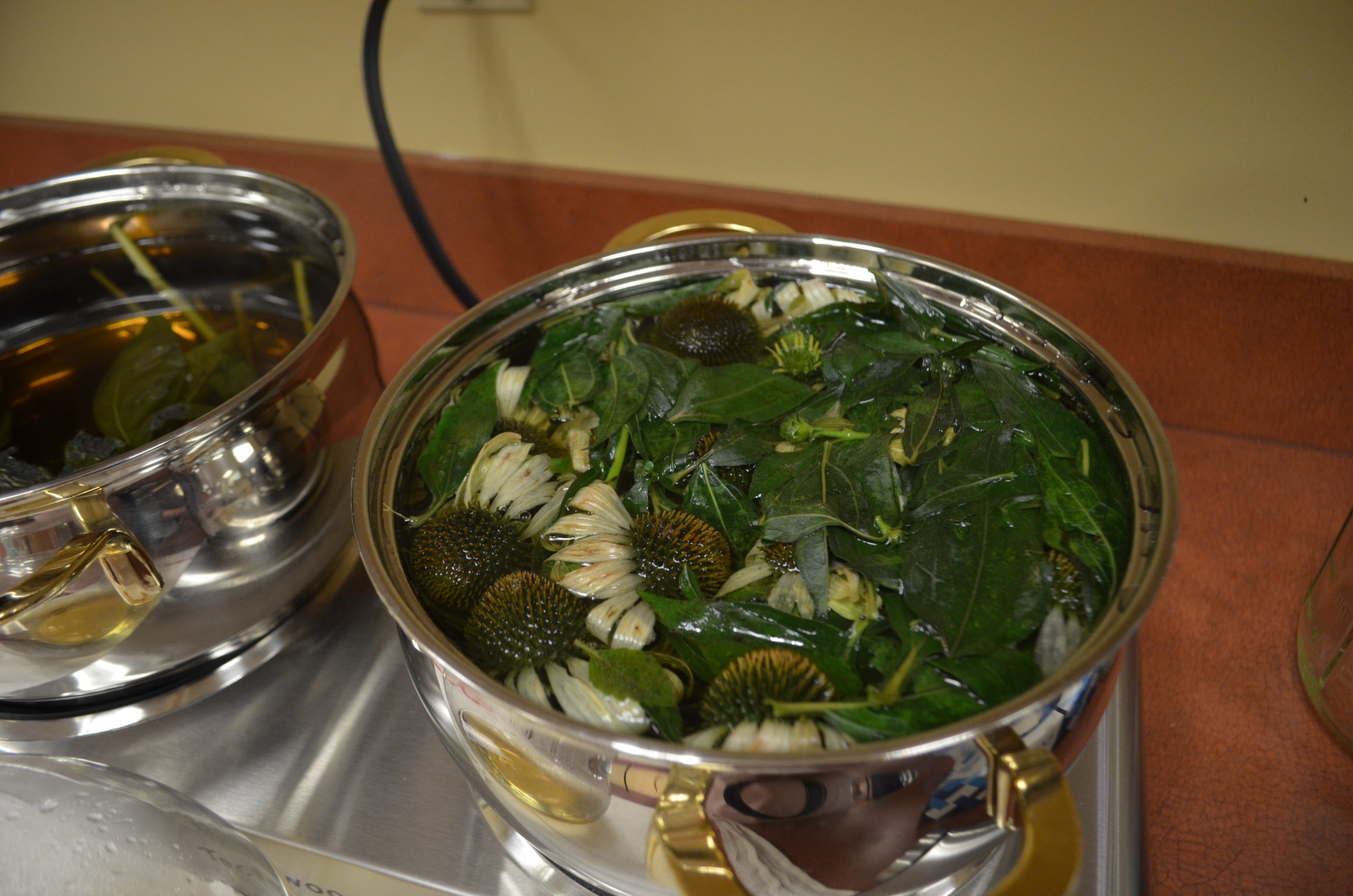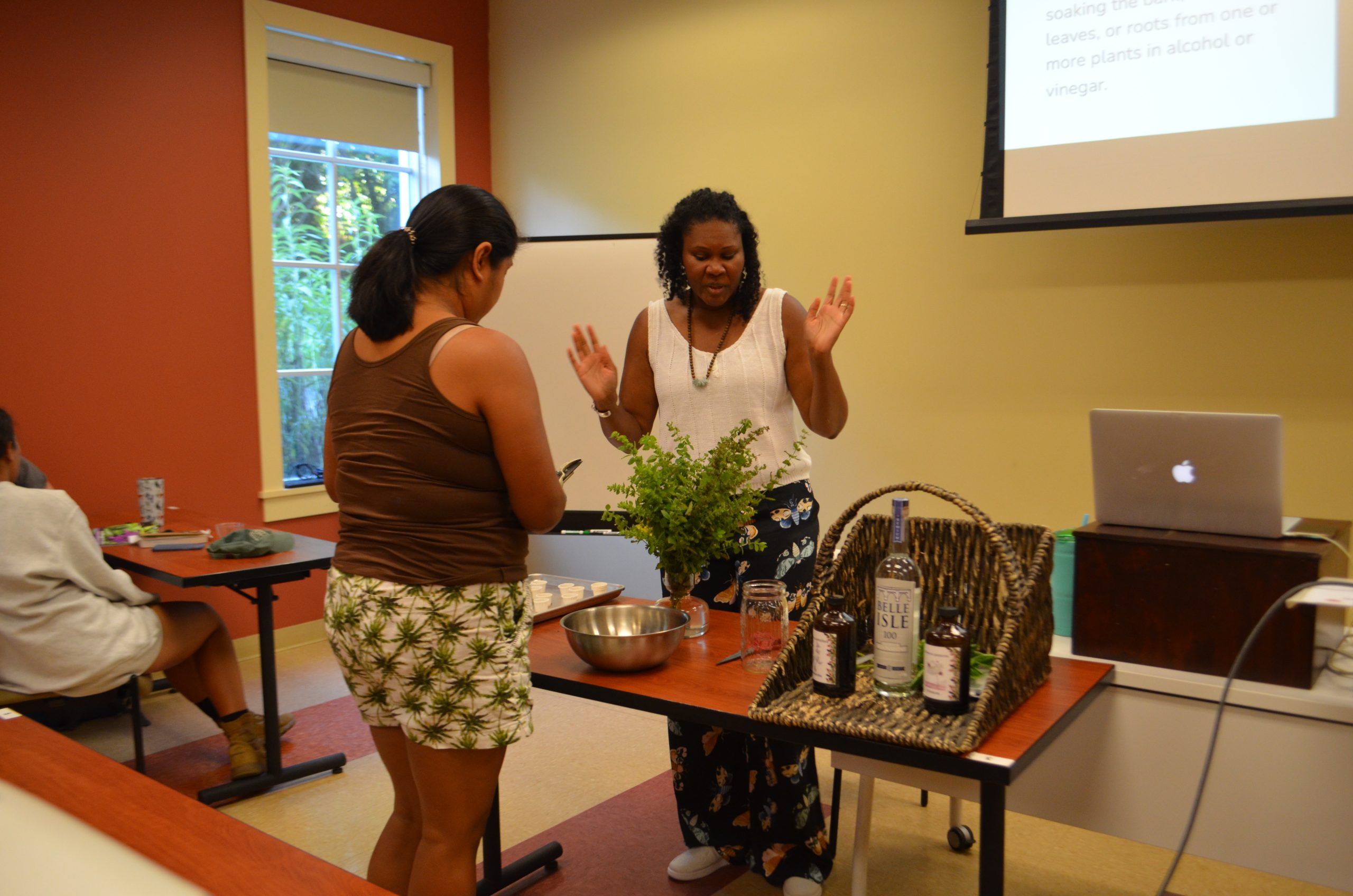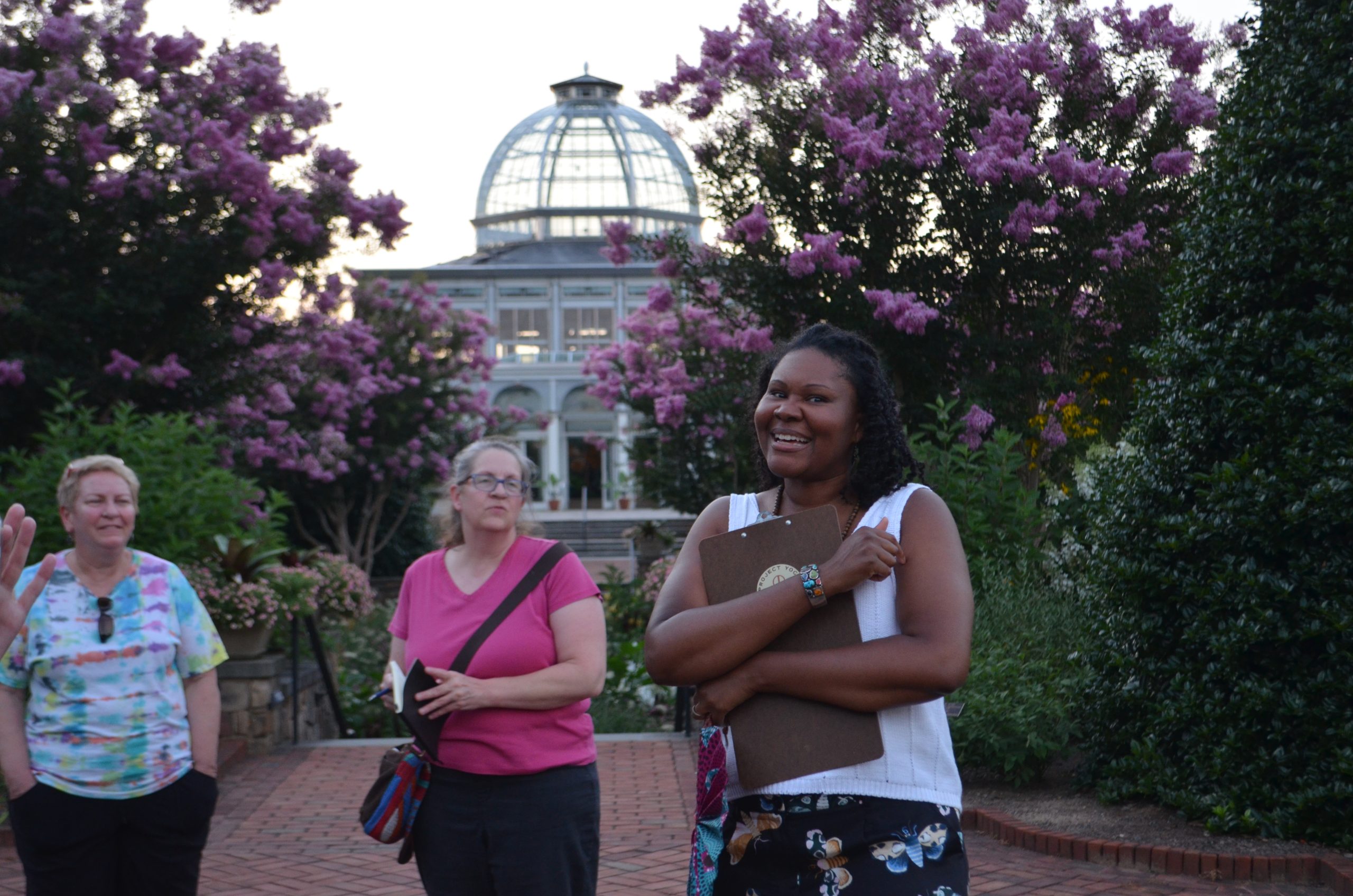Herbal Remedies Explored
What comes to mind when you think of the phrase “herbal remedy?”
What herbal remedies did your family pass down to you? Nitika Achalam began Herbalism 101: History of Tisanes and Tinctures by asking the class this question. Some people pictured the soothing drink that their mother always made for them when they had a sore throat. I thought of the aloe vera (Asphodelaceae) plant on my kitchen windowsill, reserved for the occasional cooking burn. Regardless of background, everyone has their idea of what an herbal remedy is.
Coming into this class, I wasn’t sure what to expect. I had never made a tisane or tincture before. However, after Achalam presented that first question, I realized that herbalism is about more than just being knowledgeable about plants; it’s about the intimate connection between person and plant that can have a lasting impact on how we view nature.
Meeting Nitika Achalam
Achalam, a holistic wellness educator, described how she grew up outdoors and around plants because of her mother. She also learned about herbal remedies and their many practical uses from her grandmother, who was a midwife. However, she didn’t fully appreciate this aspect of her upbringing until she became an adult and immersed herself in the world of clinical herbalism.
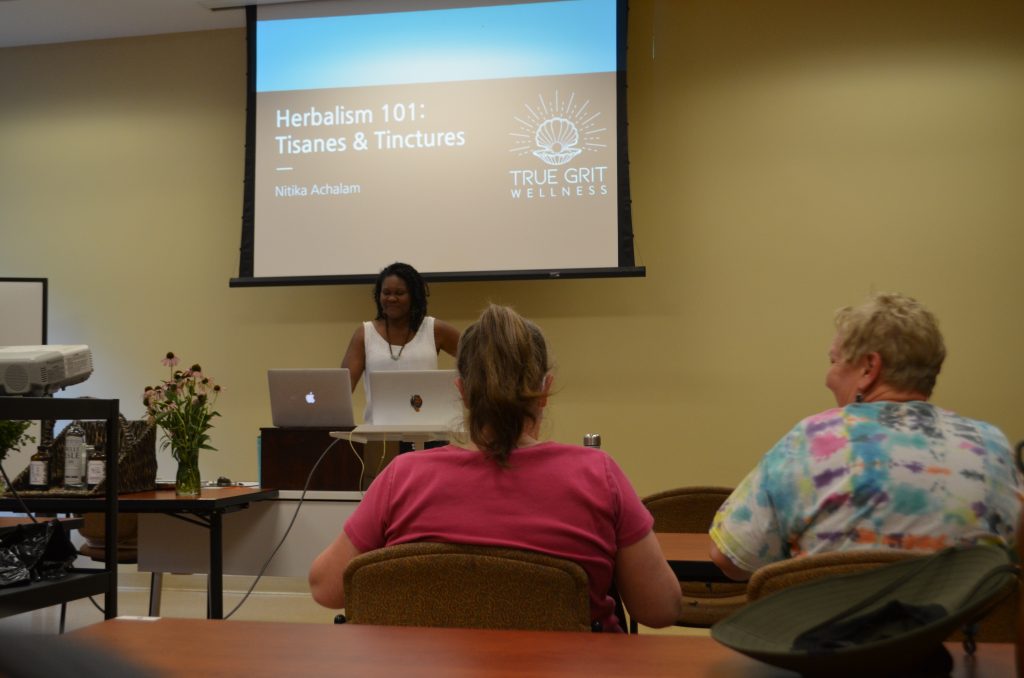
Nitika Achalam taught both Herbalism 101: History of Tisanes and Tinctures and Herbalism 101: Oils, Salves, & Topicals
She shared how her African and Native American heritage helped shape her relationship with plants. She gravitates towards certain plants that reflect her heritage and remind her of her familial roots. Achalam encouraged us to do the same and feel comfortable exploring various herbs.
Making an Echinacea Tisane
Diving more in-depth, Achalam talked about tisanes – an infusion from herbs boiled in water. First, she reminded everyone that the information she shared in class was not intended to diagnose medical conditions and that participants should do their own research on the plants they intend to use. It’s always important to correctly identify plants and their intended effects before making a tisane or tincture at home.
She explained that each plant has its purpose, so it’s best for beginners to familiarize themselves with one type of plant at a time. Listening to Achalam talk about the different medicinal purposes of herbs, it amazed me to learn that plants have so many beneficial properties. Certain plants help with anxiety, others are good for the gut, and some work well as topicals for sore muscles. For instance, at the beginning of class, we sampled a simple basil infusion that can soothe the nerves. It also helps with fresh breath, healthy gums, and good skin. I never knew that such a common herb could be a health remedy!
Next, Achalam showed the class how to make a tisane using only one plant. To start, she instructed class members to cut the blooms and leaves from freshly harvested coneflowers (Echinacea). These blooms simmered in a pot of water for a short while before being strained and poured into a pitcher.
With everyone holding a cup of the freshly made Echinacea tisane, Achalam directed us to close our eyes and clear our minds. She told us to feel the warmth of the liquid in our palms and inhale the scent of the Echinacea blooms. It’s important to meditate with your plants said Achalam, and absorb it through all of your senses. Even breathing in the steam from the infusion cooking on the stove can be a rejuvenating experience. I found the tisane to be relatively mild and not at all overwhelming or aggressively flavorful. It makes sense that this kind of drink would act as a calming remedy.
Exploring Tinctures
After the Echinacea tisane, we made a lemon balm (Melissa officinalis) tincture. Class members helped cut and prepare the lemon balm, which was then put into a jar and filled with 100-proof moonshine. Tinctures, unlike tisanes, have an alcohol or vinegar base instead of water and usually have to sit for six to eight weeks.
Since we couldn’t sample the tincture we made in class, Achalam served a small sample of an already made Echinacea tincture. Interestingly, I learned that the same plant could have different properties depending on the specific part of the plant that one uses. As soon as the tincture hit my tongue, I could taste its intense flavor.
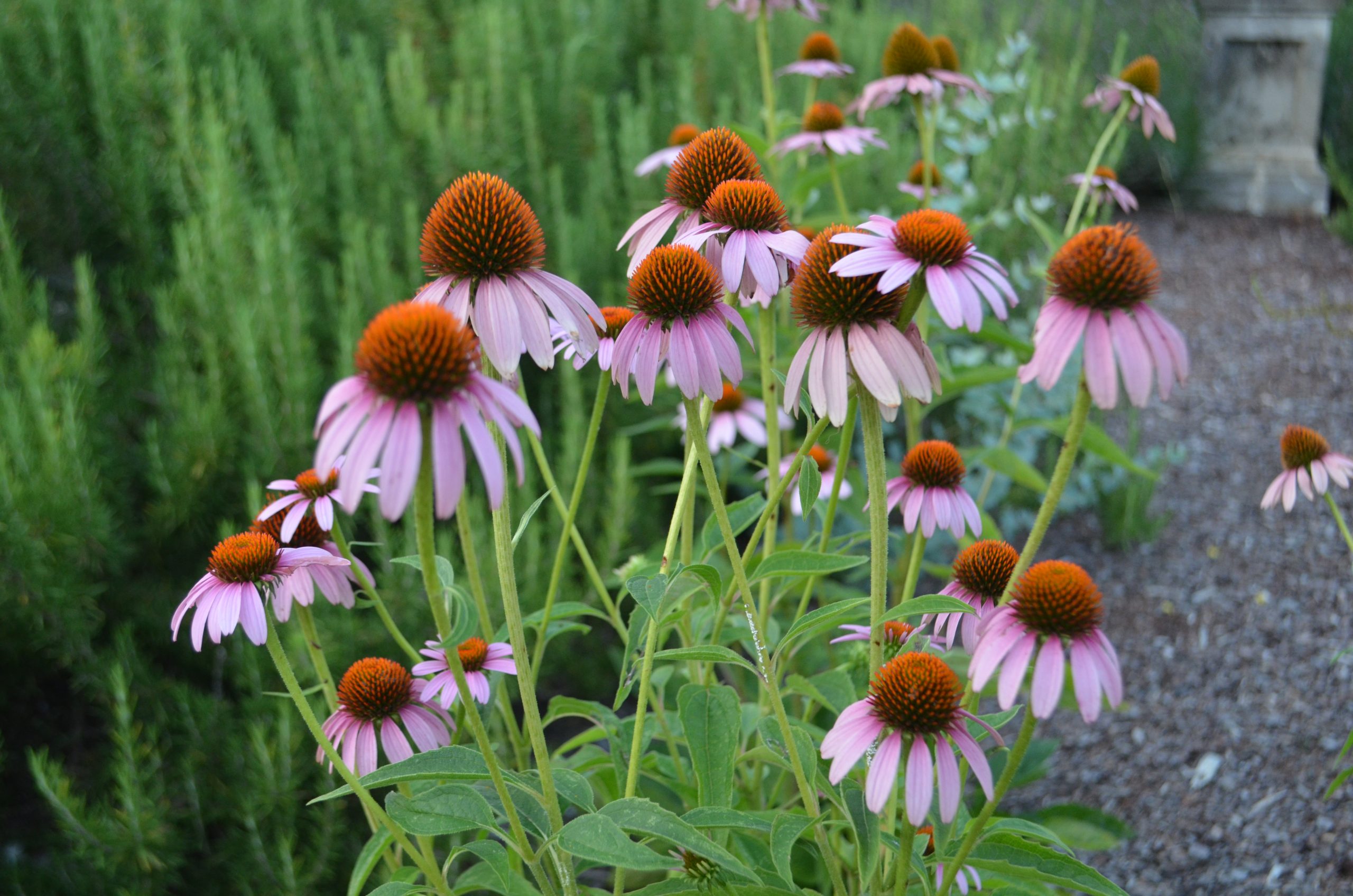
The coneflower (Echinacea) can be found throughout the Garden and can be an ingredient in herbal remedies that support the immune system.
The liquid made my mouth feel warm, tingly, and numb because it contained the root of the Echinacea plant, as opposed to the blooms of the Echinacea plant that the tisane used. I would never have guessed that the tincture and tisane we tried contained the same plant! It’s fascinating that a single plant can produce completely different effects!
Finding Herbs All Around Us!
After we learned about tisanes and tinctures, Achalam took us on an evening tour around the Garden. She walked us through the Healing Garden and pointed out various plants we could use in our herbal remedies. We smelled the strong aroma of rosemary and learned about plants like lungwort (Pulmonaria) which can be beneficial for the respiratory system.
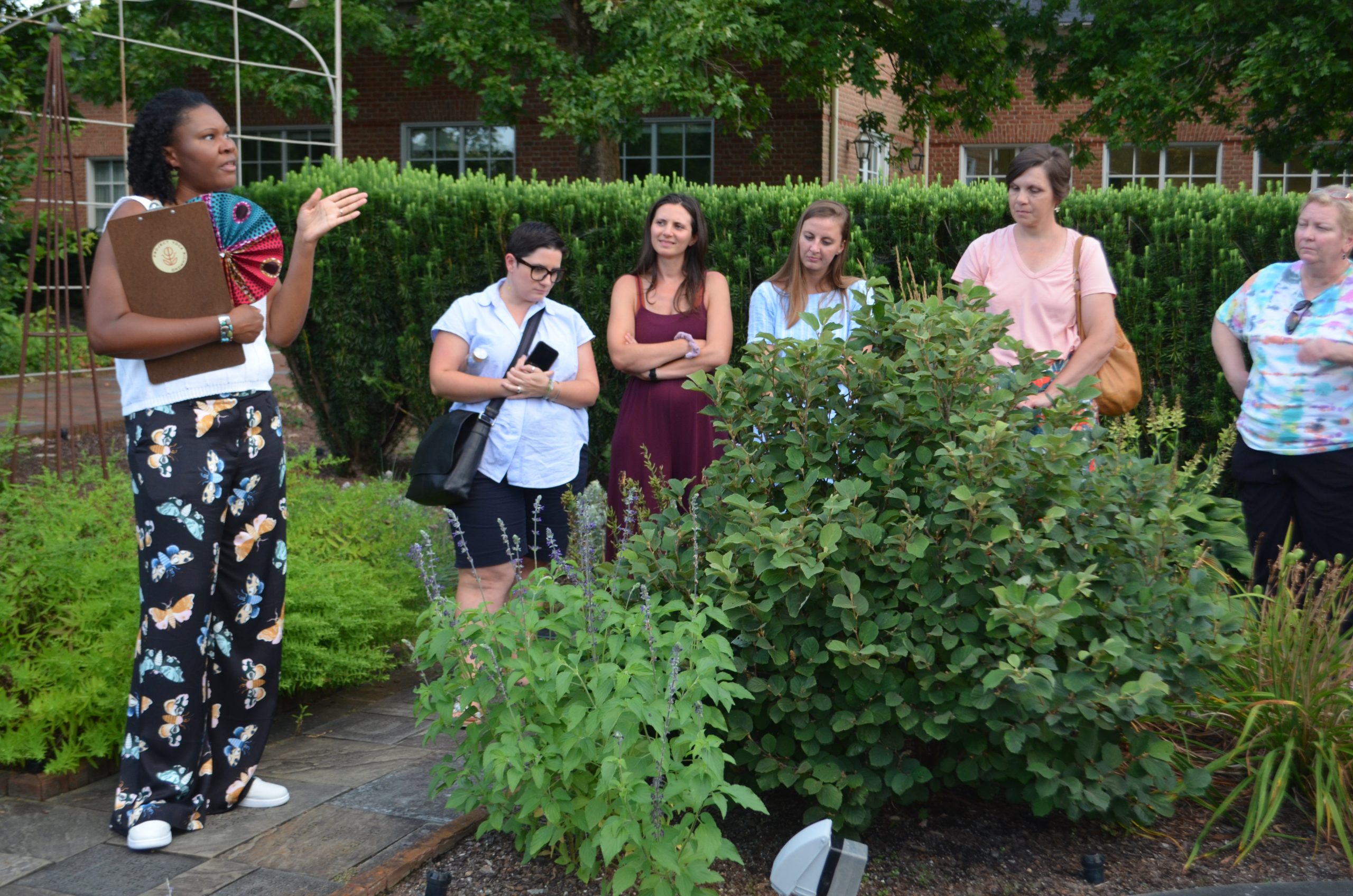
Nitika Achalam pointed out several plants that you can grow in your garden for use in herbal remedies.
By the end of the class, I learned that herbalism doesn’t have to be a complex and mysterious science. Sometimes the simplest of herbal remedies can make a difference. They don’t have to be made up of exotic, hard-to-obtain herbs. Our walk around the Garden showed that you could find plenty of easily accessible ingredients for your homemade remedies. Achalam taught us all the importance of going at your own pace, experimenting with the herbs of your choice, and doing what works best for your needs. Her class is perfect for people who might feel hesitant to dive into the world of herbalism.
Although Achalam has operated her own clinical herbalism business, True Grit Wellness, for over a decade, this is her first season of teaching classes in the Garden. Look for more of her classes in the coming months on our adult class listings page! Her next two classes are listed below.
Herbalism 101: Plant Identification | September 11, 2022
Practice and empower yourself with the knowledge of wild plant identification. The ability to key and ID a plant before you ingest or harness its medicine is crucial. This workshop will discuss sure-fire ways to ensure that you have the right plant before you begin and basic wildcrafting essentials.
Herbalism 101: Roots, Barks and Resins | October 15, 2022
This interactive lecture explores the majesty of roots, barks and resins of medicinal plants to create beneficial soaks, oils and salves using both fresh and dried plants. We will taste and discuss tips and tricks to grow, respectfully harvest and utilize hardy plant materials in Autumn. This workshop is hands-on. Together we will formulate an herbal remedy and each participant will be able to take a container home with them.
